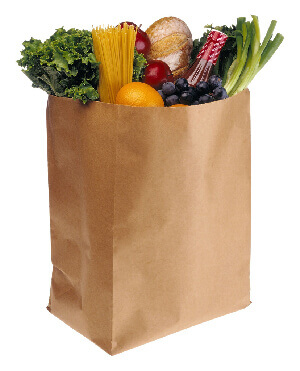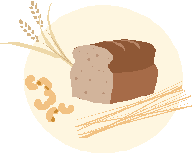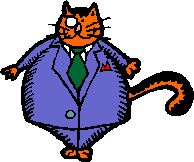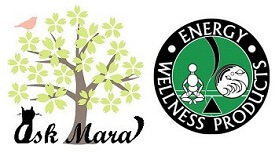Grocery Shopping for Health
We all know we need to make healthy food choices when we eat and when we grocery shop. Fruits, vegetables, and whole grains are healthy. Trans fat or hydrogenated oils are two fats to stay away from. So where do I start making healthy food choices and what do I need to think about when I am out at the grocery store?
The Basics

First we need to understand that our bodies are like a machine. What we eat and what our bodies turn our food into is the fuel our bodies run on. The healthy food choices you make can determine if your body runs smoothly or bumpy. Scientific studies have shown that what we eat does in fact impact our health, so let’s get started.
- Eat food in its natural state. The less work our body has to do to break down the food and the less toxins our body has to eliminate, the easier it is to convert the food we eat to energy the body can use. Whole foods also contain enzymes which assist in digestion.
- Be aware that there are over 12,000 chemicals, hormones, or pesticides used during the processing of food.
- Focus on the outer aisles of the grocery store where your fruits, vegetables, meats and dairy products are.
- Foods labeled “organic” must consist of at least 95% organically produced ingredients and the other 5% must be approved and on the National List provided by the USDA. Check out the dirty dozen to determine which ones to focus on for organic.
- Foods labeled “natural,” according to the USDA definition, do not contain artificial ingredients or preservatives and the ingredients they do contain are minimally processed. However, they could contain antibiotics, growth hormones, and other similar chemicals because regulations are fairly lenient for foods labeled “natural.”
- Be aware that foods can contain pesticide residue so you need to wash them properly.
- Avoid Additives like Artificial Food Coloring and Flavors; Hydrogenated and Partially Hydrogenated Oils; Preservatives like BHA, BHT, and EDTA; Sodium Nitrite; Sulfites; MSG; Formaldehyde; Propylene Glycol; Carboxy methyl cellulose; Policyclic Aromatic Hydrocarbons.
Reading Labels for Healthy Food Choices
Foods contain macro nutrients known as carbohydrates, proteins, and fats. Foods also contain micro nutrients like vitamins, minerals, enzymes, and herbs. Macro nutrients are our best sources for getting micro nutrients so make sure to read your food labels. All food labels are based on a 2,000 calorie per day diet. Check your food labels for the following:
- Serving Size and calories per serving
- % of Daily Value (DV)
- Total Fat and Trans Fat
- Sodium
- Carbohydrates
- Fiber
- Protein
- Ingredients – check these for the top 10 additives to avoid plus high fructose corn syrup and sugar.
Food ingredients are listed in the order of highest to lowest. So if you are looking at the label of something and sugar is the first or second ingredient, that tells you that the product you are looking at has more sugar in it than anything else. There are many apps on the market for detailed nutritional information on food.
Food Categories and Some Things to Know
Beverages
- Water – my number one choice. It is best to drink healthy filtered water. If you do not have a drinking water filter consider purchasing one.
- Soft drinks – if you won’t give it up, try drinking lighter colored soft drinks, less food coloring.
- Coffee – If you are a die hard coffee drinker, limit yourself to one cup of coffee per day.
- Alcohol – Consider limiting your consumption of alcohol. Recent research shows even drinking socially may affect brain health long term.
- Fruit Juices – These are high in sugar and it is much better to eat the whole fruit.
Carbohydrates
Carbohydrates are classified as simple or complex. All carbohydrates are classified depending upon their chemical structure and how quickly the sugar is digested and absorbed. Typically simple carbohydrates have one or two sugars and complex carbohydrates have three or more sugars. If you eat too many carbohydrates this can lead to becoming heavier than you want because your body burns carbohydrates for energy instead of stored fat. It is best to eat carbohydrates that are high in fiber, low in starch and sugar.
- Complex Carbohydrates are usually referred to as starches. Some examples are flour, bread, rice, corn, oats, potatoes, legumes, fruits.
- Simple Carbohydrates are usually referred to as sugars. Some examples are sucrose, glucose, fructose, high fructose corn syrup, honey, sugar alcohols (sorbitol, mannitol, xylitol), lactose, maltose.
- Glycemic Index – Lots of food are listing a “Glycemic Index”. The glycemic index is rated from 1-100 and it is how rapidly the food affects your blood sugar levels. Low Glycemic foods can make you feel fuller longer helping you to lose weight. You can view more information at the glycemic index..

Whole Grains
They are high in fiber and are referred to as “whole” because they retain their outer coat (germ). Whole grains can offer you more protein and they convert to blood sugar at a slower rate. Check your food labels for fiber content. Flour, breads, crackers, pasta, and rice are examples of whole grains. It is best to avoid refined white flour and healthier to use spelt, rice, oat, buckwheat, barley, cornmeal, whole wheat, whole wheat pastry flour. Below are some suggestions when deciding which ones are healthier.
- Breads – whole grain, whole wheat, or rye.
- Crackers – rice, whole grain, whole wheat, rye.
- Pasta – whole wheat, rice, vegetable.
- Rice – brown, wild, kasha, couscous.
Fiber is mostly made up of food elements that do not fully digest. These elements act as sweepers for clearing the intestines which is necessary to pull out toxins. Soluble fiber is hydrated with water such as fruits, vegetables, and legumes. Insoluble fiber is bran, whole grains, seeds, and fruit skins. It is best to avoid a low-fiber diet and foods with less than 2 grams of fiber. If you are not eating enough, consider adding a fiber supplement.
Fruits
Fruits have the highest water content of any food and are very cleansing to the digestive tract. They also requires less energy to digest than any other food which is why it is best to eat fruit on an empty stomach twenty to thirty minutes before eating anything else. Most fruit provides fiber, potassium, and vitamins A and C. Remember to wash off external pesticides.
Vegetables
Vegetables are very high in vitamins and minerals and are very alkalizing to our bodies. They are very helpful in balancing pH and are a great source of fiber. Most vegetables provides carbohydrates and some protein. Many people feel that vegetables are the best food to eat for optimal health!
Sugar and Sweeteners
Well we all know sugar is not number one for our health! It is also best to avoid refined white sugar. I can not stress enough how important I feel it is to avoid artificial sweeteners like aspartame, saccharin and splenda. Some healthier alternatives to sugar are as follows. Remember even though these are alternatives, they are still sugar.
- Raw Unprocessed Honey
- Stevia
- Maple Syrup
- Black Strap Molasses
- Turbinado Sugar
- Agave Nectar
Did you know that consuming 6 teaspoons of sugar decreases the body’s immune system function by 25% and that your average can of soft drink contains 12-18 teaspoons per can!
Proteins
Proteins are the main macro nutrient that builds and maintains muscles. Most of our body is actually made of protein including our hair, skin, nails, blood, muscles, hormones, enzymes, neurotransmitters.
Good sources of protein are eggs, fish (freshwater and saltwater are better than farm raised), lean meats (B Vitamins, iron, zinc), nuts, seeds, tofu, turkey, chicken, and protein powders (soy, whey which is made from cow’s milk, vegetable, and rice). You also need to be aware that protein also comes from plant sources so you do not over eat protein.
It is best to avoid animal products that use xenoestrogens. Xenoestrogens are synthetic hormones that make the animals grow quicker and bigger. Some people also avoid antibiotics because they believe that when antibiotics are given to animals they are passed on to us. Protein Sources to avoid are fatty meats, fried meats, bacon, sausage, ham, processed meats (bologna, hot dogs, salami, etc.).
Nuts and Seeds
Raw nuts in the shell are best and they tend to stay fresher longer. Never eat moldy nuts, which is why many people avoid peanuts and it is a common allergen. It is also very important to make sure you fully chew your nuts. Organic or natural peanut butter is healthier because it is not laden with sugar. You may want to also try some “Nut Butters” like almond, cashew, pecan, walnut, be sure to check the labels for sugar.

Fats
Fats are needed by the body to transport fat soluble vitamins like A, D, E, and K. Good fats help to increase your metabolism and are essential in building cell membranes, clotting blood, act as a cushion to protect our vital organs, and to protect us during extreme temperature. There are different types of fats.
- Saturated – found mostly in foods from animals and some plants. Examples are beef, butter, cream, whole milk, cheese, coconut oil, palm oil, palm kernel oil, whole milk, fatty meats
- Mono unsaturated – found mostly in avocados, olives, and nuts.
- Polyunsaturated – usually liquid at room temperature – vegetable oil, corn, safflower, soybean and sunflower oil, also found in fish.
- Hydrogenated or Trans fat are fats that are transformed with hydrogen to extend their shelf life.
- Essential Fatty Acids are not produced by the body and are commonly known as Omega 3’s and Omega 6’s.
Fats to avoid are vegetable oil, corn oil, shortening, margarine, hydrogenated or partially hydrogenated oils. Healthier fats are extra virgin olive oil, coconut oil, butter, and flax seed oil.
Tips to Start Making Healthy Food Choices
- Join our Free 13 Week Healthy Habits Email Program
- Drink More Water Cutting Down on Soda, Coffee and Black Tea. If you weigh 100 lbs. drink 50 oz of Water per day or shoot for 1/2 ounce of water per pound of body weight.
- Cut Down and Try to Eliminate White Flour and Sugar.
- Eat Whole Grains, Brown Rice, Whole Wheat Pasta, Rye Bread.
- Check Fiber Content on ALL Breads and Cereals.
- Eat More Vegetables and Fruits. Buy organic or make sure to wash or soak them to clean off external pesticides.
- Choose Healthier Sugar Substitutes like Honey, Stevia, Maple Syrup, Turbinado Sugar.
- Avoid Fatty Meats, Fried Foods, Pork, and Processed Meat.
- Avoid Trans Fat, Hydrogenated and Partially Hydrogenated Fats.
- Use Olive Oil and Coconut Oil. I myself choose real butter!
- Eat Organic Dairy Products.
- Choose Healthier Snacks. The top ten snacks to avoid are french fries, donuts, chips (potato or corn), soda (soft drinks, pop), cupcakes or snack cakes, candy bars, pork rinds, fat free cookies, crackers with trans fat, and pretzels.
- Watch your Stress Levels.
- Exercise.
- Consider a Probiotic, Enzyme, or Multi Vitamin and Mineral.
You may also want to check out The Organic Consumer Organization. They offer a great little newsletter “Organic Bytes” that you might want to subscribe to, or if you are interested in learning more about the organic side of things and its related news.
References:
Healthy Food Choices Made Simply by Lisa Keyes and Teresa Smith;
https://www.gcbl.org/forum/what-do-food-labels-really-mean; Medline
